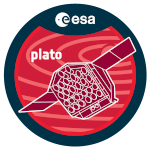The presence of mixed modes in the interior of evolved solar-like stars opens numerous avenues for their precise and detailed characterisation. Indeed, their discovery allowed us to disentangle core helium burning giants from hydrogen shell burning ones (Bedding et al. 2011). This is the consequence of the fact that these modes propagate in most of the stellar interior – as opposed to modes in main-sequence solar-like stars, that propagate only in the outermost layers. We defined an approach, EGGMiMoSA (Extracting Guesses about Giants via Mixed-Mode Spectrum Adjustment, Farnir et al. 2021), that relies on the asymptotic description of mixed modes (Shibahashi 1979, Mosser et al. 2012, Takata 2016) and allows us to efficiently adjust the complex oscillation spectra of evolved stars and retrieve stringent seismic indicators, relevant to their structure.
The present contribution consists in an exploratory work aiming at defining seismic indicators relevant to the structure of subgiants and at assessing their probing power. We consider the Gemma star (KIC11026764) as a benchmark. Indeed, this star has been observed for 48 months with the Kepler satellite. Consequently, Li, Y. et al. 2020 were able to precisely retrieve 45 individual oscillation modes. Taking advantage of the precise data, we explore the stellar parameters space over a grid of models encompassing the ones expected for Gemma (e.g. Li, T. et al. 2020) and determine the probing ability of defined EGGMiMoSA indicators and the structural information they hold. These indicators allow us to efficiently constrain the age, mass and radius of subgiants. This is crucial to the fulfillment of the PLATO mission requirements as subgiant stars are part of the core science program. This is also particularly relevant to future exoplanetary missions such as ARIEL that will benefit from PLATO's seismology to meet their requirements on precise planetary parameters.

 PDF version
PDF version
